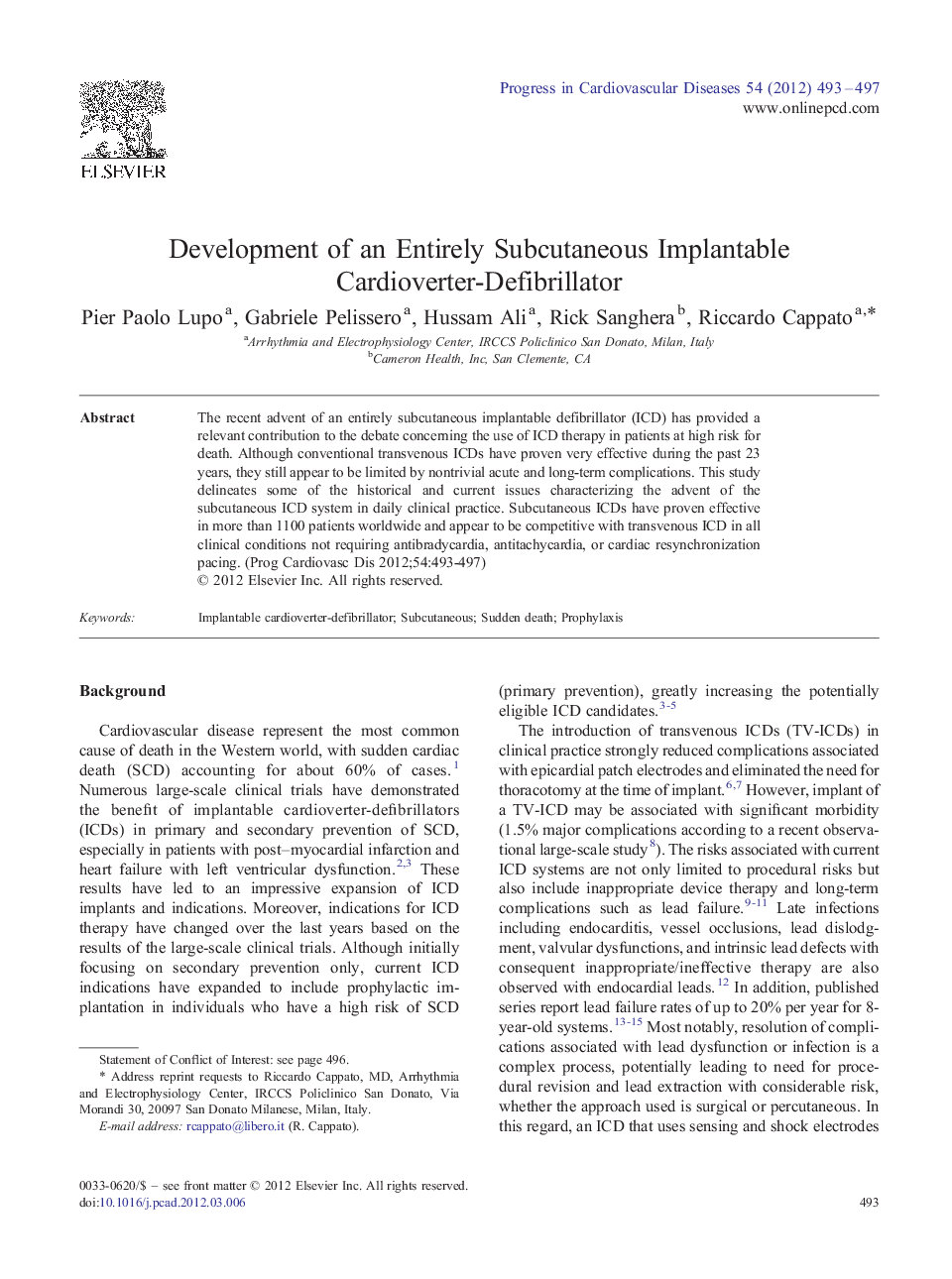| Article ID | Journal | Published Year | Pages | File Type |
|---|---|---|---|---|
| 3006860 | Progress in Cardiovascular Diseases | 2012 | 5 Pages |
The recent advent of an entirely subcutaneous implantable defibrillator (ICD) has provided a relevant contribution to the debate concerning the use of ICD therapy in patients at high risk for death. Although conventional transvenous ICDs have proven very effective during the past 23 years, they still appear to be limited by nontrivial acute and long-term complications. This study delineates some of the historical and current issues characterizing the advent of the subcutaneous ICD system in daily clinical practice. Subcutaneous ICDs have proven effective in more than 1100 patients worldwide and appear to be competitive with transvenous ICD in all clinical conditions not requiring antibradycardia, antitachycardia, or cardiac resynchronization pacing.
